




Welcome to the Spring 2024 edition of the St Andrew’s News!
I am delighted to share this edition of the St Andrew’s News with you.
This will be my final edition as CEO of this wonderful hospital, but in reading through the articles I remain inspired and enthused about all that we’ve achieved.
Private hospitals are now more than ever facing significant challenges, but St Andrew’s Hospital remains a strong performer in clinical excellence, in leading edge robotic surgery, and in the exceptional culture of care led by our staff. This is further echoed by our recent attainment of continuing accreditation from the Australian Council of Healthcare Standards. Thank you to teams across the hospital for their professionalism and skill in ensuring a wonderful effort during the accreditation process, and every day.
As I write this we are on the cusp of opening our highly anticipated St Andrew’s Wellbeing Centre, a new non-clinical space to help our patients who have been affected by cancer. This has been a huge effort we have delivered in partnership with our Foundation, and I am
confident it will stand out as a significant milestone that reflects the hospital’s commitment to holistic care.
St Andrew’s Hospital is a community, and our specialists are a very important and valued part of that community. We have very longstanding relationships with many of these specialists, as well as new partnerships forming all the time. Developing these close working relationships is a key factor in delivering truly integrated, patient-centred care. The partnerships are made possible by the brilliant support of our Director Nursing and Clinical Services, Jacquie Wiley, and her team of just over 550 nurses.
Thank you for all your support, and please enjoy.

“This will be my final edition as CEO of this wonderful hospital, but in reading through the articles I remain inspired and enthused about all that we’ve achieved.”
Stephen Walker Chief Executive Officer
The St Andrew’s Hospital Breast Clinic is a long-standing partnership between the hospital and Jones Radiology, alongside specialists in surgery, oncology and radiotherapy. The aim is to provide high quality diagnostic and treatment options for breast cancer patients, in an efficient, comfortable and caring environment.
Now located on Level 2 at the new 337 South Terrace premises, Jones Radiology is filled with natural light and has an expansive, peaceful outlook into the canopy of the parklands. This is often the first port of call for people newly referred by their GPs for investigation of potentially cancerous breast tissue; an understandably anxious time. The layout and process have been designed to make women feel as comfortable as possible, with a separate waiting room and imaging wing with two mammogram and two ultrasound rooms (double the capacity of the previous location, which was on the Hospital grounds).
Mammographic-guided biopsy and ultrasoundguided biopsy procedures, when required, are also carried out here.
Sarah Langston is one of the Breast Care Nurses from St Andrew’s working at the Breast Clinic, guiding and counselling patients through the process. Sarah says that a key part of her work is to interact with patients while they are waiting for results after their imaging. In the dedicated waiting room, she speaks to women about the experience, answers
questions and helps ease fears. She notices that the bright and spacious waiting room in the new facilities will often foster camaraderie between the patients, who begin conversing together.
“It’s quite heartwarming; sometimes they laugh or they exchange breast cancer history. Sometimes it’s even a reuniting of old acquaintances – people who shared a hospital room or live in the same town or went to school together.” Other patients are understandably more reserved at this time, and the Breast Care Nurses work to understand each person’s individual needs.
In most cases, the wait is very short and results of imaging are available to the patient’s medical specialist within around ten minutes. The patient is able to go straight to meet with the specialist, to discuss diagnosis and treatment where necessary.
Long-standing St Andrew’s Breast Surgeon and Hospital Board Member, Dr David Walters, is delighted to see such an eagerly anticipated enhancement of the service. “In breast cancer diagnosis,” he says, “you are very much working as a team. There’s often a discussion between
the radiologist, pathologist and surgeon about how investigation and management might progress. In a dedicated facility, you have the consolidated efforts of a team to produce the best possible imaging, and the most expert interpretation of that imaging. The radiologists and ultrasonographers at Jones Radiology have particular expertise in breast imaging, as well as in making patients feel comfortable and cared for.”
The success of this working relationship at the Breast Clinic has prompted further close communication amongst the extended care team for St Andrew’s breast cancer patients. Once a week, a multi-disciplinary team meeting gathers together the complete treatment team of surgeons, oncologists, radiation oncologists, pathologists and breast care nurses, to discuss all current cases.
Within the St Andrew’s precinct on South Terrace, a breast cancer patient can access their entire treatment including imaging at Jones Radiology, surgery at St Andrew’s, chemotherapy at St Andrew’s Medical Centre (corner of Hutt St)
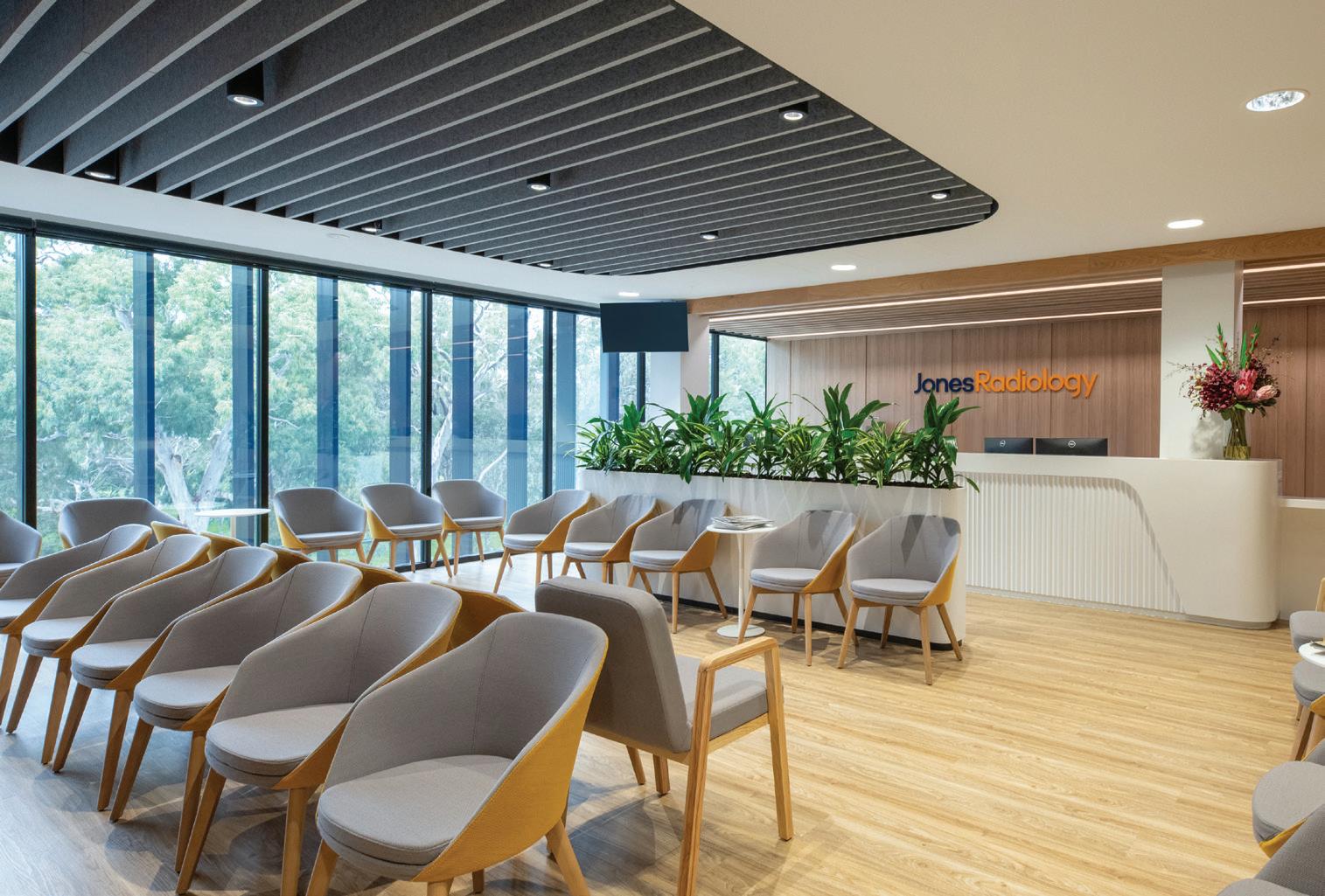
and radiotherapy at GenesisCare, on Level 1 at 337. The close proximity of services and the efficiency of the Breast Clinic diagnostics are particularly beneficial for patients who must travel to Adelaide from their homes in country areas.
Dr Walters explains that many patients at the Breast Clinic are already veterans of the process, although it still can be a confronting visit.
“Because the modern management of breast cancer is so successful, dealing with the challenges of longterm survivorship is very important. We don’t really think of five year survival rates for breast cancer anymore, although these rates for early stage disease have improved from 75% in the 1980s, to close to 100% today.
We are usually expecting normal life expectancy with early detection. Therefore, an ever-growing number of women attend to have an annual follow-up mammogram. Busy women really appreciate that this can be provided in a onestop facility where patients can have a mammogram, speak to a Breast Care Nurse and see the surgeon immediately. If there are any abnormalities they can be worked up and actioned. But the vast majority receive same day clearance for that round of imaging, and it’s ‘see you next year’.”
Breast cancer treatment has advanced significantly in recent decades through early detection, targeted therapy and best supportive care. Dr Walters says, “today’s surgery is less invasive and has better outcomes. For the minority of women who are not suitable for, or choose not to have breast conservation, we have some of the most experienced reconstructive surgeons at St Andrew’s, accessing all the current technical advancements. In addition, the medical and radiotherapy treatments offered are best-practice.
Powered by multidisciplinary review, these treatments are specifically targeted to the patient and their unique cancer biology.”
“We have always had an excellent Breast team at St Andrew’s. It is really pleasing that this care can now be provided in such a state-of-the-art facility. During a difficult time, the calming ambience of a tree-top view, an understanding chat with a Breast Care Nurse and the reassuring expertise of dedicated imaging technicians make a big difference.”
Ultimately, says Dr Walters, the Breast Clinic services are about best-practice medical treatment from a cohesive multidisciplinary team, alongside the St Andrew’s philosophy, ‘where care matters most’.
Dr David Walters Breast, Endocrine and General Surgeon, 341 South Terrace, Adelaide Phone: 8223 3006
Jones Radiology is at Level 2, 337 South Terrace, Adelaide.
For appointments and enquiries phone: (08) 7100 5029
Breast Clinic surgeons:
Dr James Kollias
Dr Melissa Bochner
Dr David Walters
Dr Robert Whitfield
Dr Janne Bingham
Dr Arne Nathan
Dr William McLeay
(Retiring November 2024)
St Andrew’s has a reputation for delivering excellence in the treatment of breast cancer, through the complete suite of services within its precinct on South Terrace. The Hospital’s motto, ‘where care matters most’, is exemplified by a new position, Breast Care Liaison – Clinical Nurse.
Experienced chemotherapy nurse Melissa Dryden is dedicated to helping patients navigate the emotional and practical aspects of the full breast cancer treatment journey.
This role is made possible by fundraising event the Pink and Blue Swim. As well as still taking an active role in administering chemotherapy treatments, Melissa helps patients, their support people and their families to comprehend and manage their diagnoses, treatments and life changes.
“This might involve education, accessing resources from outside organisations, resources within the Hospital, acting as a patient advocate between specialists, answering questions,” says Melissa. “Anything I can do to make this process easier.”
Any cancer diagnosis can be overwhelming, and Melissa explains that patients can often find themselves plunged into appointments and treatments without much time to take stock, make adjustments and ensure they feel properly informed.
“I can explain at a patient’s own level of understanding what their treatment is, the aim of the treatment, issues they may

expect, how to manage them. I like to let people know that there is so much support available these days, and compared to years ago, the advances made in treatment are quite remarkable.”
The service Melissa provides is tailored to each individual. “Some people come in and the last thing they want to talk about is cancer and what they’re feeling and going through. There are no rules to how people manage their situation, and for some it can change week to week. One day they might have a doctor’s appointment that’s a bit confronting, and we can sit and talk about that. Or they wake up with a question at 4am, so they can write that down and ring me in the morning.
“People have a life to maintain, often family to consider, and work, which all contribute to a huge amount of anxiety. One of the things I come across regularly is that people find it really hard to ask for support and help. So I talk about ways they can do that.”
Melissa is based in the Chemotherapy Suite at St Andrew’s Medical Centre on the corner of South Terrace and Hutt Street. The area, adjacent to specialist consulting suites, is largely open-plan, filled with natural light
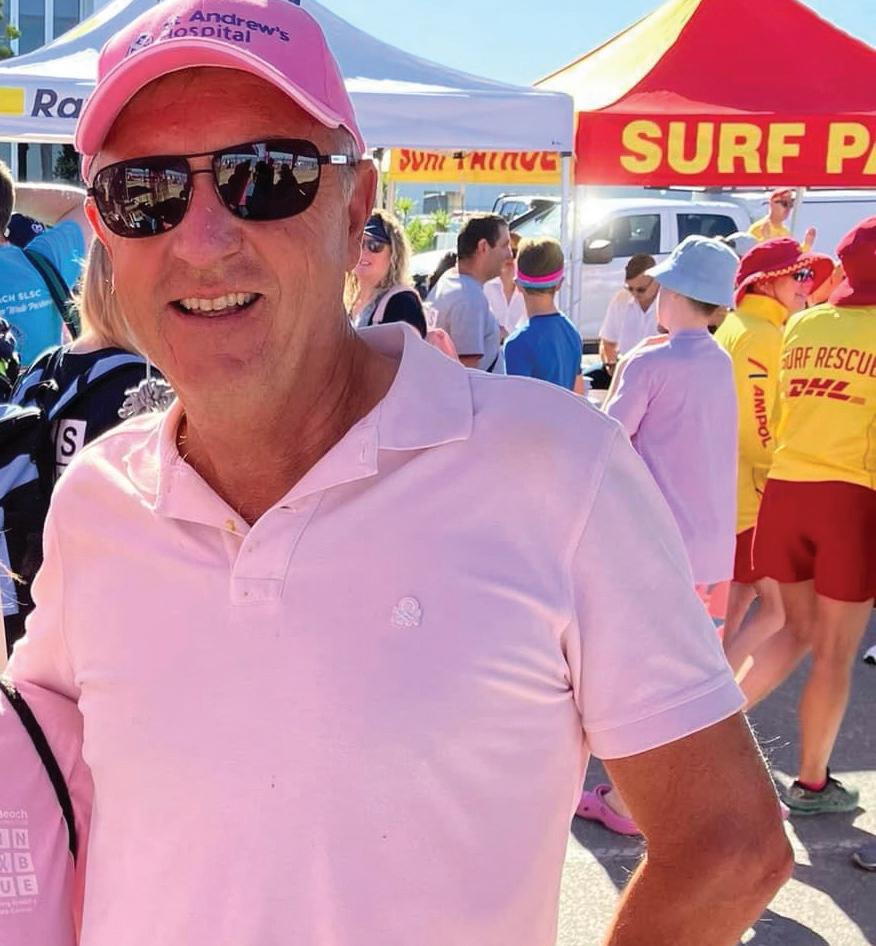
“I’m very, very passionate about this... it’s so rewarding. I feel I’m very lucky to be in this position, it’s a privilege.”
and designed to feel more welcoming and less clinical than an in-hospital setting.
Through a patient’s journey, Melissa can be in touch with the patient’s specialist doctors, Breast Care staff at the Hospital, and at the medical imaging and radiography services at 337 South Terrace. “This communication is so beneficial for the patients and their support people and families, but also the health system in itself. It helps everybody stay in touch with the needs of the patient, and can alleviate issues popping up.”
“I’m very, very passionate about this,” says Melissa, “it’s so rewarding. I feel I’m very lucky to be in this position, it’s a privilege.”
Each year, thousands of swimmers, walkers and runners from across South Australia hit the beach to raise money for our Hospital.
The Pink & Blue Swim/Walk/Run event, led by the West Beach Surf Life Saving Club and supported by its many partners, has been supporting transformative breast cancer care at St Andrew’s Hospital for many, many years.
They have made possible the purchase of vital equipment and the refurbishment of spaces used by the Breast Care team. We could not be more grateful for all their care and support.
Partnerships like this play a vital role in strengthening the Hospital’s ability to provide increased care and support to patients and their families. We are a completely independent hospital, and we work closely with health funds to ensure we receive the best benefits possible for our activities, but philanthropy has a really essential role to play in this too.
Supporting the new role of a dedicated Breast Care nurse in our chemotherapy suite has already in its first year had a significant impact in the positive and supportive experience of our patients.
Thank you so much to West Beach Surf Life Saving Club and everyone who supports this award-winning community event.
Looking forward to the return of this fantastic community event in 2025! To keep up to date on this event please see www.westbeachslsc.com.au

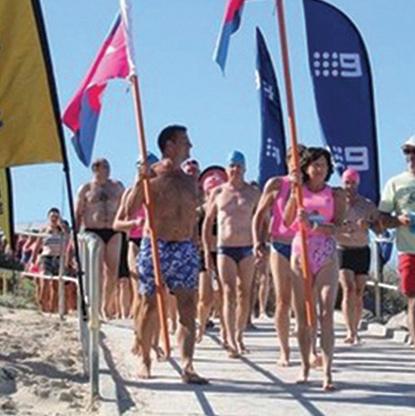
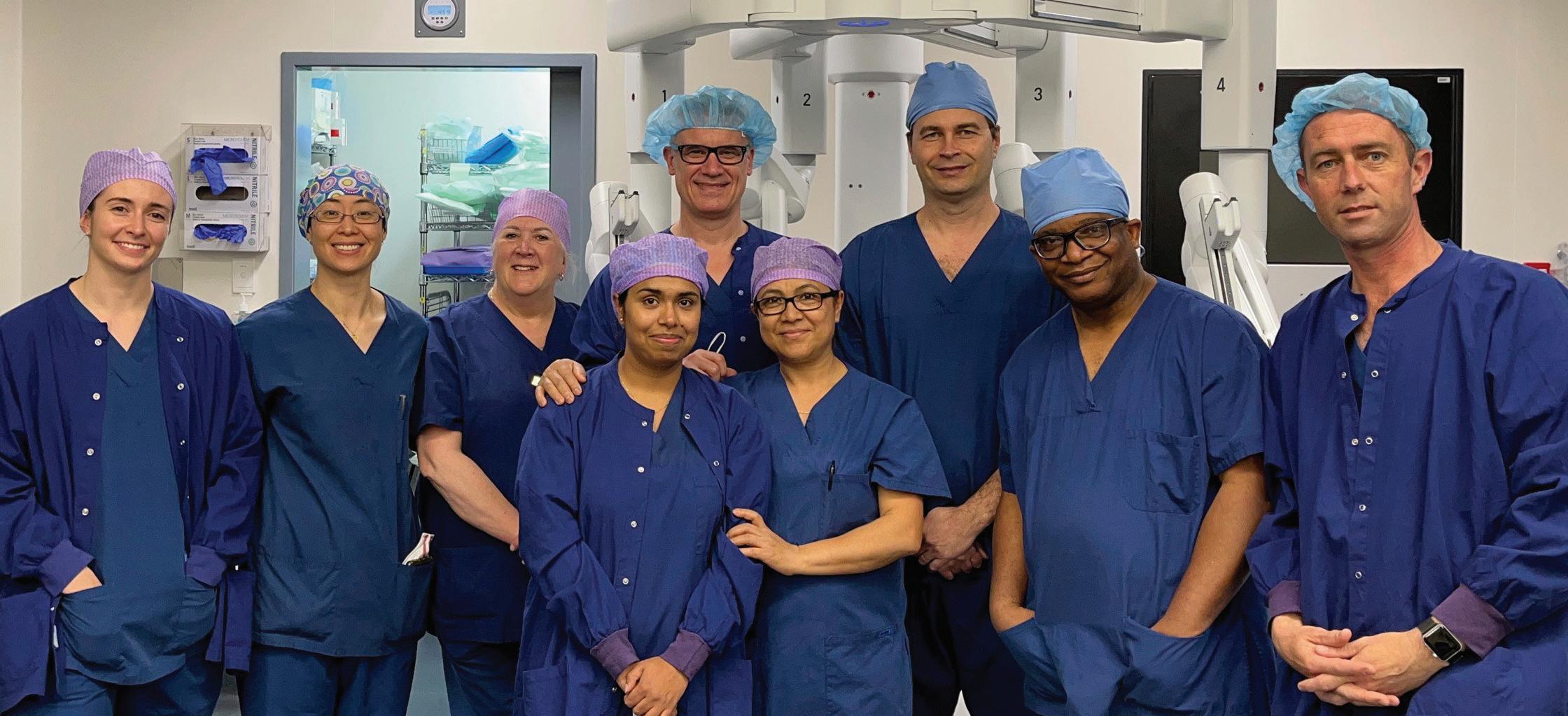
The state-of-the-art da Vinci robotic surgical system (featured in Issue 46) at St Andrew’s is currently the only robotic system of any kind used in thoracic surgery in South Australia. Cardiothoracic Surgeon Dr Fabiano Viana spoke to us about the benefits of the da Vinci system for advanced thoracic (chest) surgical techniques.
“Robotic surgery is becoming more and more common in thoracic surgery procedures worldwide,” says Dr Viana. “Minimally invasive video-assisted procedures had become standard for most thoracic surgical procedures, but the robotic platform has added two specific advantages. Firstly, the enhanced 3-D camera viewing, which offers the surgeon depth perception, and has an excellent zoom capacity. This is particularly helpful for very fine surgical movements. And secondly, the manoeuvrability of the wristed instruments, which mimic the surgeon’s own wrists and fingers. It’s like being able to put our hands
inside the chest cavity, yet it’s still minimally invasive keyhole surgery.”
Minimally invasive surgeries offer patients obvious benefits: smaller incision sites, less pain and blood loss, and therefore shorter hospital stays and recovery times.
thoracic
Dr Viana explains that robotic techniques have also advanced the medical field, with the ability to perform more and more complex procedures using a minimally invasive access.
“In lung cancer surgery, there is a movement towards preserving as much healthy lung tissue as possible, which means performing smaller and smaller resections. If someone has a nodule in a lobe, the previous gold standard was to perform a lobectomy, which is the removal of a lung lobe. But if the nodule is small, and the procedure is oncologically sound, we can now perform a segmentectomy, which is removal of a segment of a lobe. With the da Vinci’s wristed movements, we are able to perform complex segmentectomies without having to open the chest using larger incisions.”
“The robot also allows us to perform improved and more extensive removal of lymph nodes during lung cancer surgery,” adds Dr Viana. “That can be very important for the staging of the cancer, and also potentially to help cure the cancer.”
Thymectomy, removal of the thymus gland that sits in front of the heart, is another procedure that Dr Viana now performs with the da Vinci robot.
“For small tumours of the thymus gland or for patients with Myasthenia gravis, the robotic thymectomy has now become the gold standard method. We aim to not only perform more complex procedures in a safe way, but also help the patients recover more quickly and get back to their normal lives.”
Dr Viana emphasises the value of the entire robotic surgical team at St Andrew’s. “The St Andrew’s da Vinci robot is the most used in the Southern Hemisphere, which means the hospital has a highly trained team including anaesthetists, surgical assistants, nurses and technicians.
Their experience has contributed immensely to the safe and successful development of the thoracic robotic surgical program.”
Dr Fabiano Viana, MD, FRACS, is based at the Royal Adelaide Hospital Cardiothoracic Surgical Unit, and operates at St Andrew’s Hospital.
Phone: (08) 7074 1811
The system has two main parts. The surgeon sits at a console within the operating theatre, with high definition 3-D video vision and precise hand controls. At the operating table, a robotic machine with four arms for camera and surgical instruments, moves with extreme flexibility and accuracy, according to the surgeon’s own hand movements.

“Partnering with consumers involves treating consumers with dignity and respect, sharing information, and encouraging participation and collaboration. There is good evidence that working in partnership with consumers and fostering consumer-centred approaches to care can help improve the safety and quality of care.”
– St Andrew’s Hospital Consumer Engagement Framework (2021)
Patients, their families and carers are intrinsically involved in the ongoing development of care and facilities at St Andrew’s Hospital. From an individual patient level, right through to contribution on management committees, the hospital ensures the consumer voice is heard and considered from the outset. This results in a more comfortable, informed and safe hospital experience, and indeed can contribute to better health outcomes.
Tina Donaldson, Quality and Risk Manager, explains that the hospital’s processes are informed by the National Safety and Quality Health Service (NSQHS) Partnering with Consumers Standard. Since the first version of this Standard was introduced in 2012, the partnership model has become warmly embraced by the hospital, as it has helpfully guided multiple improvements.
“As an organisation,” says Tina, “we look for opportunities to have meaningful discussions and partnerships with our consumers. From the nurse at the bedside right through to higher level strategic planning and governance, we make sure that we have that consumer voice front and centre.”
As part of the admission process, each patient is asked, “what do you hope to achieve by coming into hospital?” The intention is to look beyond pure medical outcomes in working with the patient to plan their care and achieve their goals. An individual might express, for example, a desire to resume a sporting activity, or favourite home routines with a partner. This gives staff insight into the patient’s hopes, lifestyle and needs, and enables a closer partnership in working towards this personal goal. “The patient is the expert in themself, not us,” says Tina. “We want to know, where’s the opportunity to make their experience a more positive one?”
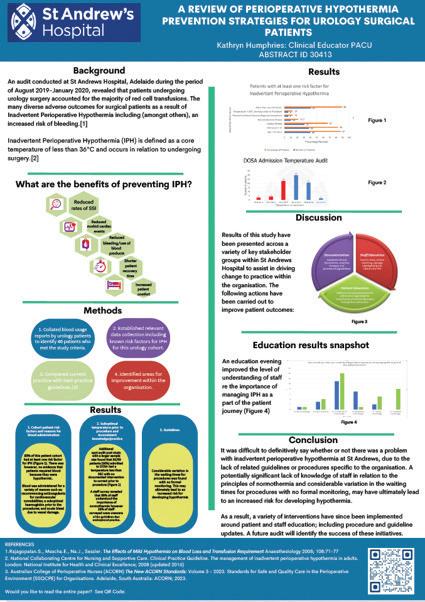
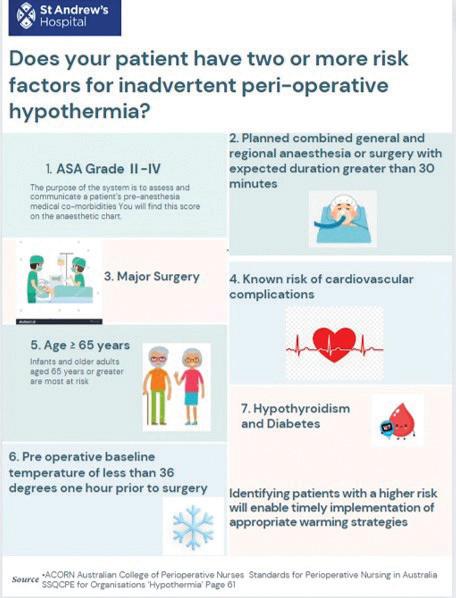

Specific patient cohorts at St Andrew’s are consulted on matters that relate to their particular lived experience. For example, when developing an information brochure for Urology patients, staff will talk to patients currently on the Urology Ward to gather input and feedback. This has resulted in more helpful, patient-centred information that is able to address the real concerns and knowledge gaps that members of this group are likely to have.
Dr Tamara Page, Associate Professor of Nursing, Innovations in Quality and Safety, (featured in Issue #46), frequently works together with Tina Donaldson to ensure that relevant patients and their support people are consulted during the hospital’s research and healthcare innovations.
(See opposite ‘A consumer partnering success,’)
The development of the Wellbeing Centre at 337 South Terrace has been a rewarding example of co-design with consumers. A consumer forum was established from the outset, comprised of individuals who had accessed services at St Andrew’s over a number of years. Together they represent a range of recent experience including surgery, chemotherapy and cardiology. They have influenced the Wellbeing Centre’s formation, from the initial programme of information sessions and exercise classes, right through to details of furnishings and how these affect the individual’s comfort and interactions with other patrons.
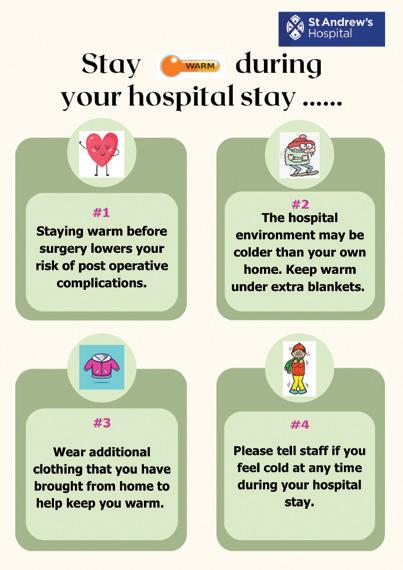
A review of blood use at St Andrew’s Hospital identified that patients undergoing Urology surgery accounted for the majority of red cell transfusions. It is well documented that Inadvertent Perioperative Hypothermia (a drop of body temperature during surgery) is one of the contributing factors for an increased risk of bleeding.
As a result, a second project was undertaken in 2023 to review the prevalence of Inadvertent Perioperative Hypothermia in St Andrew’s Urology patients. The review identified that 36% of the patient cohort was considered to be hypothermic (body temperature below 35°C) on admission.
As an organisation, we look for opportunities to have meaningful discussions and partnerships with our consumers. From the nurse at the bedside right through to higher level strategic planning and governance, we make sure that we have that consumer voice front and centre.
- Tina Donaldson Quality and Risk Manager
To reduce this risk, policies and procedures were updated, staff education was provided and a poster to reinforce evidence-based practice was implemented. As it was noted that patients were already hypothermic on admission, it was decided patient education regarding this risk was also required. A poster was co-designed with and evaluated by consumers during their admission, and with input from the Hospital’s Consumer Reference Group. The poster is now displayed at point of care in all relevant clinical areas. Informed patients are able to actively contribute to their own healthcare by ensuring they stay warm, and communicating associated needs to staff.

Specialist nurses are essential to the function of a hospital’s operating theatres. St Andrew’s has created its own program to train experienced nurses for this exciting step on their career paths. The inaugural Perioperative Nursing Program (PONP) began in November 2023, with three nurses undertaking the 12 month intensive training.
Naomi Kingscott, St Andrew’s Clinical Educator – Theatres, has created the curriculum. “It’s intensive training in a scaffold learning protocol, she explains. “We build up knowledge, starting with the basics of learning to be a Scout Nurse, then introducing the skills of a Scrub Nurse.”
In the operating theatre, the Scout Nurse helps set up, collects equipment, completes essential paperwork, surgical count and more. The Scrub Nurse performs a surgical scrub, dons a surgical gown and gloves and assists the surgeon directly with procedures.
Charlotte Shephard, Kate Pittman and Tamara (Tam) Rischmueller were selected for the PONP in a rigorous screening and interview process.
“The trainees all have a minimum of three years acute care nursing experience, but not in a theatre setting,” explains Naomi. “They’ve come with key skills like critical thinking and patient assessment, and this course gives them an opportunity to follow their passion.”
The training involves extensive handson experience, as well as workbooks,
assignments, essays and presentations to management. “The program is a real team effort,” says Naomi. “The Clinical Nurses within the education team and the staff on the theatre floor have worked closely with the trainees to help them gain knowledge and confidence.”
After the initial twelve months of training, the nurses will continue rotation through the ‘clinics’ (specialty surgery areas e.g. orthopaedics, cardiothoracic, neuro and spinal) to become familiar with the different surgical equipment, instrumentation and techniques.
The PONP nurses have found the training extremely rewarding so far.
“The PONP is an opportunity to learn a completely different nursing role. It’s given me the confidence to take on new challenges and expand my clinical skills and knowledge. It’s a privilege to be there for patients at some of the most vulnerable times of their lives.”
- Tam
“I knew I wanted a new career challenge, and the PONP was a unique and rare opportunity. It is so different from any other nursing, and I know I will always be learning and growing, which is exciting.”
- Charlotte
“It has been a massive learning curve - coming from an area we are confident in, to learning everything from scratch - however the education team and theatre staff have been so supportive and provided us all with so much confidence.”
- Kate
Chaplain Jenski joined St Andrew’s in 2023 as the successor to long-serving Rev. Peter Morel. Jenski personally provides a caring presence and listening ear to patients and their loved ones in times of need. She is also an Accredited Educator in Clinical Pastoral Education (CPE), and trains external students within the hospital. CPE brings a fresh facet to both the provision of pastoral care within St Andrew’s, and the commitment the hospital has to clinical education.
CPE is a well-recognised international program with origins in 1930s USA. It has developed from being primarily a Christian training to embracing diversity in faiths, and nonreligious pastoral care.
Over a period of six to twelve months, Jenski trains small groups of students in the practice of providing spiritual and pastoral care. A significant part of their education is to spend time throughout the Hospital gaining supervised practical experience. Thus, St Andrew’s has the benefit of a greater number and larger variety of pastoral care providers available.
Pastoral care is applicable in many fields, and Jenski says that her students come from multiple backgrounds.
“They come to us with a variety of valuable skills and life experience. Three of the current cohort are already employed as chaplains elsewhere. Others might be offering spiritual or pastoral care in other hospitals, or the defence force, schools, aged care, emergency services or prisons. Some are older people, transitioning from a working life to meaningful volunteering. Others are working as nurses or allied health professionals and want to develop their listening skills.”
Jenski explains, “CPE is considered the gold standard in terms of training people to be present and sit with those who are in distress”. She stresses that pastoral care “is not about fixing people or cheering them up”. It’s about “walking alongside people; being present, listening, acknowledging, and normalising what it is that they are feeling”.
CPE Supervisors and Educators train for many years to attain their qualifications, and are expected to continue practising as they provide training. This provides the opportunity for Educators themselves to also continually upskill and reflect. “It keeps things fresh,” says Jenski. “In our reflection sessions, we hear stories from students about their encounters with

people. And we unpack that amongst a group of peers and supervisors.
“I think CPE is as much a formation process as an education process. It’s about understanding who we are, and how to remain balanced and grounded when we’re dealing with people who are quite upset. Not taking on their distress, but understanding what our role is in that space. It’s an intentional, skilled role that I’m helping students learn.”
St Andrew’s, in partnership with Jenski, is proud to be playing a role in Clinical Pastoral Education. The program is contributing to the quality of care for people in difficult circumstances, not only in our own hospital but also other hospitals and organisations around the state.
Supporting our St Andrew’s Hospital community
The St Andrew’s Hospital Foundation is dedicated to supporting St Andrew’s Hospital, Australia’s largest independent private hospital. Our mission is to enhance both the outcomes and experiences of our patients and their families. Through our efforts, we invest in state-of-the-art equipment, fund modern patient environments, and work closely with the hospital to provide comprehensive and responsive support. Everything we do is aimed at ensuring that St Andrew’s Hospital continues to deliver exceptional care and comfort to our community.
South Australia is renowned for its vibrant volunteering culture, and at St Andrew’s Hospital, we deeply appreciate the contributions of our volunteers. National Volunteer Week offers a special opportunity each year to express our gratitude and celebrate the incredible work our volunteers do in supporting the Hospital.
This year, we were delighted to hold our celebration at Government House, graciously hosted by Her Excellency, the Honourable Frances Adamson AC. The event saw a wonderful turnout, with volunteers, staff members who work closely with volunteers, and our Foundation Board Members all in attendance.
Our Board consists of community leaders, strategic advisors and philanthropists who volunteer their time to enrich the activities of the Foundation in support of St Andrew’s Hospital.

It was a memorable occasion that allowed us to honour and thank everyone for their dedication and service.
A special thanks goes out to those volunteers who celebrated milestone anniversaries with us this year. Your ongoing commitment and generosity are invaluable to the St Andrew’s Hospital community.

St Andrew’s Breast Care Luncheon, 17 October 2024
St Andrew’s Classic Golf Day, 15 November 2024


The St Andrew’s Hospital Foundation annually awards the Janet Hay Clinical Scholarships to high-performing clinical staff. This scholarship program, a priority of the Foundation, is designed to support the Hospital's robust in-house education program and empower clinical teams to further develop their skills and expertise, benefiting St Andrew’s Hospital as a whole.
Named in honour of the Hospital’s Founder, Janet Hay, the program is supported by donations made to the Medical Education and Research Fund, a subcommittee of the Foundation Board. The scholarships enable nurses to explore various nursing specialisations, develop research skills, and pursue electives that align with their interests and career aspirations.
Popular courses supported by the scholarships include the Graduate Diploma in Nursing Science, with specialties in Perioperative Nursing, Cardiac Nursing, Stomal Therapy Nursing, Intensive Care Nursing, and Anaesthetic and Recovery Nursing.
The program is generously funded by Visiting Medical Officers, HPS, and private benefactors, who recognise the importance of continuing education in advancing the quality of care at St Andrew’s Hospital.
The scholarships enable nurses to explore various nursing specialisations, develop research skills, and pursue electives that align with their interests and career aspirations.
Ginu Johny
Graduate Diploma in Nursing Science (Oncology Nursing) at the University of Adelaide
Tegan Matters
Post-Graduate Certificate in Paediatric Nursing Studies at the Australian College of Nursing
Georgia Moore
Graduate Diploma in Nursing Science (Cardiac Nursing) at the University of Adelaide
Georgia Ortenstein
Professional Certificate in Clinical Education at the University of South Australia
Imogen Partington
Graduate Certificate in Nursing (Nurse Education) at the University of South Australia
Bryden Weston
Graduate Diploma in Nursing Science (Orthopaedic Nursing) at the University of Adelaide
We have received hundreds of StandOut nominations, recognising our staff for living St Andrew’s values. Here are a few:
Julie is such a hardworking and dedicated staff here on the ICU. She deserves to be the winner of this nomination for her kindness towards patients and staff and her ability to stay calm even when the unit is falling apart. We all love her, and she is our standout Nominee of the Year.
Chris is a hard worker and team player. He is a lovely person to work with and consistently goes above and beyond when helping in the team.
Rebecca always gives 110%. Her cardiac experience is a great resource on the ward. She is very thorough and delivers a high standard of nursing care. She is a considerate and supportive team member and a positive person to be around.
Kerry is a really hard worker, always on top of her work and consistently offers to help the staff members she’s working alongside. She’s a real team player and reliable to work with.
Paul is always very helpful to all staff and patients, he also displays a cheerfulness and positivity that is contagious to those around him.
Dharmesh has the most positive outlook, he is ALWAYS smiling, helpful and always makes an effort to acknowledge everyone who passes his way.
Teresa cares for her patients not only because it’s her job but because she truly cares. She inspires everyone through her hardwork.
Kyara is always supportive of her team and wants them to have the best shift possible and advocates for their safety.
Quan is a fantastic nurse who is always a great team member to work with! He provides excellent nursing care and is always willing to assist others.
Prasamsa is an exceptional clinician with great attention to detail.

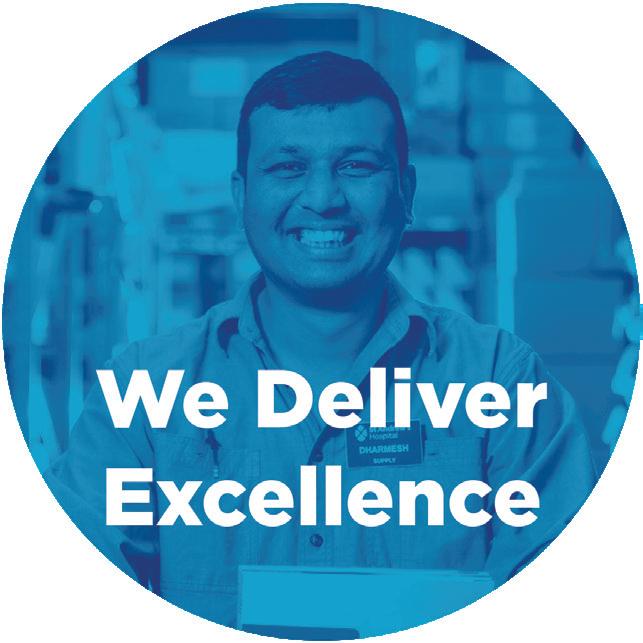
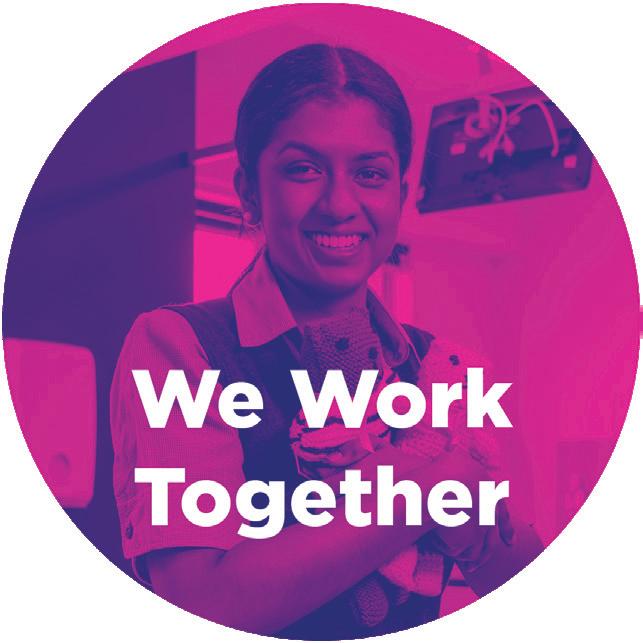
Thank you to all our volunteers who generously give their time to support St Andrew’s. Your dedication and kindness make a tremendous difference, and we are incredibly grateful for everything you do.
Ms Vanessa Ball
Ms Sharon Bernhardt
Ms Ann Boehm
Mrs Caroline Bryant
Mr Garry Burchell
Ms Fiona Chan
Mrs Marisa Cheese
Ms Rita Chow
Mrs Colleen Cleland
Ms Susie Coles
Mrs Adrienne Coombe
Mrs Denise Cotterill
Mrs Jennifer Coulls
Mrs Kaye Darcy
Miss Victoria DiSisto
Mrs Barbara Dunstan
Mrs Anne Eastwood
Ms Alison Evans
Miss Tara Evans
Mrs Tatiana Ezhlova
Mrs Lynlee Fox
Mr Mark Fullerton
Ms Melissa Garrels
Mrs Jennifer Gilliland
Ms Cecelia Greve
Mr William Grierson
Mrs Ros Griffiths
Mrs Monica Gualberto
Ms Natalia Gunadi
Ms Yaqin Guo
Mr Geof Gutte
Mrs Eleanor Harding
Ms Jill Highett
Ms Sarah Hill
Ms Pamela Hughes
Mrs Marcia Hyde
Ms Yeshe Jamso
Ms Garima Kamboj
Ms Deepti Khambete
Ms Elaine Kling
Mr Alan Kohler
Mrs Brenda Kroning
Scan here to learn more about volunteering!
Mr Geoffrey Lake
Mrs Anna Lawrence
Mr Neville Lawrence
Mrs Sandra Lindop
Ms Susana Macaya
Mrs Robyn Macpherson
Mrs Joanna Maddern
Mrs Margaret Marslen
Mr Adrian Mazzachi
Mrs Kristin McKay
Mr Aidan Mogie
Mr Robert Morgan
Mrs Suzanne Moyle
Ms Trooky Nguyen
Mrs Judi Noblet
Mrs Kathleen O’Connell
Ms Robyn Octoman
Mrs Susan Oke
Ms Jessica Ortega Villafranca
Mr Henry Pead-Ferenczi
Mrs Shirley Pearce
Mrs Rebecca Poon
Mrs Delma Reed
Mrs Barbara Richards
Mrs Heather Roach
Mr John Roach
Miss Cheryl Russell
Mrs Reena Sharma
Ms Robyn Shilcock
Miss Mary Sullivan
Ms Margaret Sutherland
Ms Carol Swarbrick
Ms Hui Tao
Mrs Raelene Thorpe
Ms Wallis Tsai
Mrs Valerie Turnbull
Mrs Lorraine Venn
Mr Michael Venning
Ms Liz Rodriguez Vides
Ms Rosanne Walston-Leo
Mrs Mary Withers
Ms Lexi Zhang
Over the past year, many St Andrew’s staff members have reached significant work milestones.
35 years Elizabeth Anne Knight 2nd Floor | Carmelina Matarazzo Dietary Services | 30 years Caroline Michelle Guest After Hours Coordinator | 25 years Katrina Eileen Griscti 2nd floor and Stomal Therapy | Julie Kim Williams CCU | Tiffany Ann Carrigan Patient Services | 20 years
Jennifer Shirley Goldsmith Patient Funding | Amanda Chisholm Bookings | Deidre Elizabeth Galezowski Quality & Audit | Marianne Jane Quinn Procedural Suite | Biserka Skara 4th Floor | 15 years
Andrew John Otway CCU DTR Department | Janelle Suzan Freeman Recovery | 10 years Mark David Remington Recovery | James Marcus Jan Jakub Ziubinski CSSD | Kirsti Louise Murch 4th Floor
We offer our thanks and best wishes to our recent retirees.
Christine Cunnew CCU, RN • 36 years | Elizabeth Knight Clinical Manager, 2nd Floor • 35 years | Kerry Holm Graduate Coordinator, Nursing Admin • 33 years | Rosalie Collins RN, 3rd Floor • 32 years | Trudy Unger CCU, CN • 26 years | Penny Martin RN, 3rd Floor • 24 years | Gayl Gallagher Bookings, After Hours Bookings • 23 years | Coula Cokkinos Dietary Services, Dietary Services Assistant • 20 years | Maureen Westo Patient Services, Patient Services Manager • 15 years | Andrew Hodge Supply, Warehouse Team Lead • 15 years | James Crinson Maintenance Supervisor • 10.5 years | Cathy Berney Finance, Patient Funding Officer • 2 years
Sandra (Sandy) Harris, a long-time staff member of the St Andrew’s CSSD, is preparing for the trip of a lifetime. It’s a trip that will reach far further than her own experience, because she is volunteering on a hospital ship in Madagascar, with organisation Mercy Ships.
The mission of Mercy Ships is to provide free surgeries and healthcare services to sub-Saharan African nations where people have limited access to safe surgical care. Because the world’s populations tend to be concentrated in coastal regions, a moored hospital ship is an effective way to take medical care where it is needed most.
Sandy will live aboard the Mercy Ships vessel and work in its on-board CSSD for four weeks, cleaning, disinfecting and preparing reusable medical equipment. She will join a team of volunteers from all over the world who fill all jobs on the ship, including housekeeping, galley, deck crew, doctors, nurses and everything in between.
From the Mercy Ships website: “Among the countries Mercy Ships serves, which lie on the lower third of the World

Ingredients
3 large eggs
1 tablespoon chopped fresh herbs, such as chives, and flat-leaf parsley
Salt
Freshly ground black pepper
1 tablespoon unsalted butter plus more for serving
2 tablespoons shredded cheddar cheese (optional)
2 bacon rashers (optional)
Health Organisation’s Human Development Index, access to available and reliable health care is extremely limited. Diseases, congenital defects, and more go untreated. Countless people suffer and die from maladies that can be easily cured.”
Sandy is using her own Annual Leave to volunteer, and St Andrew’s is incredibly proud of her selfless contribution. She’s excited to be part of a team making a big difference where it’s really needed.
“Everyone that goes on the ships is part of changing life for a whole community,” she says. “And you’re working with people from all over the world that all have the same goal.”
We wish Sandy the safest of travels and look forward to hearing about her time on board the ship and in the Madagascan community later this year.
For more information about Mercy Ships and volunteering opportunities, visit www.mercyships.org.au
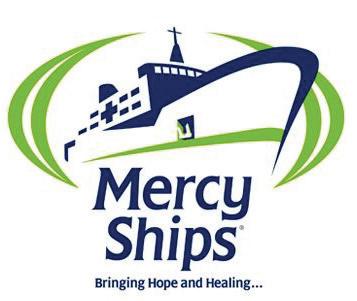
Method
1. Crack eggs into a bowl, add herbs, and season lightly with salt and pepper. Using a whisk, beat until well blended and ingredients are incorporated.
2. Pre-cook bacon. Heat nonstick pan over high. Add butter, and cook until foamy but not browned, tipping pan to coat bottom evenly with butter.
3. Pour eggs into pan; immediately swirl pan clockwise while stirring eggs vigorously counterclockwise with chopsticks to keep curds small and creamy.
4. When a soft scramble forms, stop stirring eggs. Drag chopsticks around outside edge of omelette to turn wispy edges into scrambled eggs.
5. Once a thin sheet of cooked egg (egg crêpe) forms on surface of pan, quickly sprinkle with cheese, and pre-cooked bacon if desired.
6. Using an underhanded grip on handle, tilt pan away and begin rolling egg crêpe filled with soft scrambled eggs toward edge of pan opposite the handle. Using chopsticks, tuck edge into omelette. Turn out omelette onto plate, seam side down. Garnish with parsley and it’s ready to eat.
Chef Tip:
For even better results use a carbon steel non-stick pan and cook bacon in an air fryer
Stephen Walker, CEO of St Andrew’s Hospital, announced his retirement recently after 23 years at the helm.
“It has been a privilege and an honour to be the CEO of this wonderful organisation for the past 23 years,” Stephen said. “Working with all of the dedicated staff, volunteers, and Visiting Medical Officers has been an incredible experience.”
Under Stephen’s leadership, St Andrew’s Hospital has grown to be a nationally recognised and respected private hospital.
“St Andrew’s enjoys an exceptional reputation for our commitment to patient safety and quality, and that is all due to the magnificent teamwork here. We are now the largest independent private hospital in Australia and a true South Australian organisation,” he added.
Stephen leaves behind a remarkable legacy, including the introduction of cardio thoracic, robotic, and neuro surgeries, major developments at 321 and 337 South Terrace as well as the Eastern Clinical Development, strong relationships with health insurance funds, and the growth of staff numbers to over 900.

Hospital Board Chair, David Whitbread, praised Stephen’s achievements. “I have had the pleasure of working with Stephen for the past six years. His achievements, interaction with VMOs and staff, and his ability to make things happen have been impressive. He is one of the best CEOs I have worked with, and St Andrew’s position in the community is a credit to him and his executive staff.”
Deputy Chairman Dr. Jim Sweeney echoed these sentiments, noting Stephen’s exceptional contribution over his tenure. “I have been associated with St Andrew’s Hospital for 37 years as a clinician and board member. Stephen’s leadership has been transformative, particularly in the structural development of the hospital and its focus on clinical excellence. This will be his lasting legacy.”
The Hospital Board has engaged Stillwell Management Consultants to conduct a worldwide search for Stephen’s replacement and wishes him the very best in his retirement.
“
He is one of the best CEOs I have worked with, and St Andrew’s position in the community is a credit to him and his executive staff.
”
Join our community of medical professionals in a highly sought after parklands precinct on the edge of the CBD

160m2 Consulting Suite available now in the brand new 337 Building
337 South Terrace, Adelaide - Adjacent to the serene Adelaide Parklands.
Base your practice in a world-class medical precinct in a newly constructed, 5-star NABERS-rated building designed with both patients and professionals in mind. This state-of-the-art facility is already over 90% leased, housing leading healthcare providers like Genesis Care, Jones Radiology, Cancer Research SA, and the St Andrew’s Breast Care Centre.
• Prime Location: The beautiful southern parklands at your doorstep with easy access to transport and city amenities.
• Professional Atmosphere: Join an esteemed network of medical professionals and researchers in one of Adelaide’s most sought-after healthcare addresses.
• Eco-Friendly Design: 5-star NABERS energy rating, ensuring sustainability and comfort for you and your clients.
Perfect for consulting specialists, allied health professionals, and healthcare providers looking for a contemporary, upscale space to operate in a leading medical hub.
For more information or to arrange a viewing, please call: 08 8408 2139